Review: Hemp Heritage Watercolor Paper: Watercolor Basics
"Premium Hemp Heritage Fine Art Paper"
I'm always interested in trying new things, especially in the world of watercolor. I've tried Yupo (for watercolor, for alcohol markers, and with Pitt Pens) a synthetic paper made from plastic, I've dabbled with a variety of watercolor papers, and I'm always swatching new watercolor sets. A couple years ago, I spotted Hemp Heritage Watercolor paper on Amazon and was intrigued. I've used plastic, cellulose based, and cotton rag papers, as well as papers that are a mix, but I've never used hemp papers.
Hemp is an interesting and intriguing fiber choice that may appeal to many artists. Those who are pro hemp claim that farming it remediates the soil and consumes excess C02, that hemp grows in a variety of climates and consumes little water (source). "Hemp is a sustainable, biodegradable, and durable material that can revolutionize these industries!" (source) that can be used for cloth, paper, and industrial products. Hemp is resistant to mould and mildew and is naturally microbial (source). Hemp grows rapidly and doesn't require pesticides in its production (source). Hemp fibers are more porous than other natural fibers (which might allow for faster dry times) (source). Hemp is extremely fast growing and '1 acre of Hemp produces as much paper as 4.1 acres of trees' (source). Combined with lower water usage, and no need for pesticide, hemp seems like an ideal choice, although the earth environmental scientist in me thinks these all points to hemp being an ideal invasive species. Although hemp papers aren't yet commonly available, a few are making their way onto the market, tempting artists like myself who are used to wood pulp and cotton.
Outside of the US, hemp papers are easier to find. Hemp grown for papermaking is specifically selected to have the highest fiber content and contains none of the active chemicals of other varieties of cannabis (source)
The inclusion of recycled fibers such as recycled wood pulp can make a hemp based paper less desirable for artist use, as it can affect the lifespan of the piece (source) by altering the archival qualities of the paper.
Green Field Paper Company 'creating eco-friendly papers with a purpose since 1992'. Their products include:
Hemp Heritage Paper includes journals and sketchbooks, stationary and office, fine art papers and pads, blank cards, envelopes, and t-shirts, custom hemp products, and large format cartons and rolls.
Within their fine paper category, Green Field Paper offers Hemp Heritage Sketch Paper, Hemp Heritage Drawing Paper, and Hemp Heritage watercolor paper in two sizes-11"x14" and 8.5"x11", and in watercolor pads 18"x24", 8"x10", and 9"x12".
The Stats:
Ok, so what IS this actually made from, if it's only 25% hemp and contains no 'virgin' (unrecycled) wood fiber?
The Green Field Paper company's site's answer to this is "25% Hemp, 75% Post Consumer, 100% Sustainable." which doesn't answer the question at all. The product page offers no insight as to what the remaining 75% is, but it goes on to promote hemp as a fantastic wood alternative.
I'm having difficulty getting a solid answer as to what 75% actually represents, but there are a few clues on the packaging that lead me to assume it's recycled paper pulp. The package brags that it contains no virgin wood fiber- this means unrecycled or first use woodpulp. Given how squirrely the packaging is, and how little information is available online as to the remaining 75%, I can only assume it's 75% recycled wood pulp.
Just say that, Green Field Paper Company.
You guys wouldn't believe how many cellulose based paper go out of their way to hide the fact that they're cellulose based, without claiming to be cotton rag. This is an important distinction and one that's important for a consumer and artist to know pre-purchase.
100% hemp watercolor paper does exist (https://www.thehempshop.co.uk/100-hemp-watercolour-paper.html), and given that it's fairly fibrous, and used in textiles, I can assume it handles somewhat like a cross between cotton rag and cellulose, although I haven't had the opportunity to try it out myself. Strathmore makes a hemp paper that is also 25% hemp, and 75% post consumer waste fibers.
Also Available on
EcoChoices
Reviews like this one require a significant amount of investment to write. Money, time, experience are all poured into these reviews, to help you find art supplies that are the right fit for your needs and your abilities. You can help ensure I'll continue reviewing art supplies by pledging $1 a month and joining my Artnerd community on Patreon.
Your monthly pledge is membership to my little community, where I share early access videos, backer exclusive reviews and tutorials, backer exclusive monthly sketchbooks, and artist resources and comics.
Not interested in a commitment, but still enjoy my work? Send me a tip via Ko-Fi.
The Packaging:
For an eco-friendly product, Hemp Heritage Watercolor Paper comes wrapped in shrink plastic, with a paper belly band- not so eco-friendly.
The Front Reads:
I have a feeling this paper is intended more for prints than for painting, but many of the Amazon reviews mention a difficulty in getting this paper to run through the printer. I tried on both my Canon Pixma Pro and my Dell toner printer- the Pixma Pro had no problem (but it has handled any paper I threw at it), the Dell couldn't pick it up.
The Back Reads:
Initial Thoughts:
The paper is a light brown in color- quite a bit lighter than Kraft paper, and contains noticeable speckles- reminiscent of a handmade paper, but the paper's surface is very much a machine made paper- hardly any surface texture at all.
I ran this paper through my Canon Pixma Pro 9000 Mark II inkjet printer in order to print the bluelines and encountered no printing issues. That said, the Pixma Pro has never given me trouble with printing on heavier, 140lb watercolor papers, cotton rag papers, or Bristols, so it's not surprising that it could handle something only slightly heavier than most cover stock weights.
I encountered few issues with penciling either, but if you're like me and like to pencil with a mechanical pencil, beware of the speckles- they can catch on your pencil and tear the paper.
When stretching, the water seemed to stay on the surface, rather than soaking into the paper.
Which led to some buckling as I stretched this illustration.
This isn't that uncommon- the Hemp Heritage Watercolor Paper stretches like any cheap cellulose paper- moderately well and really benefits from the extra support.
Inkjet ink washes out quickly- I was concerned that it might stain the paper, as it has with some papers.
I allowed it to dry fully before applying my initial wash.
If you're enjoying this review of Hemp Heritage Watercolor paper, why not stick around and
located in the Watercolor Basics section? Head on over and check it out, and let me know what you think using the contact form! If there's a topic you'd like to see covered in Watercolor Basics, I'd love to know!
Field Test:
Initial wash didn't go as well as hoped- water sits on surface of the paper, ends up pooling and soaking under the tape.
Washes are somewhat difficult to control on this paper, perhaps due to the extra surface sizing.
When applying a wash, it handles like a very cheap cellulose paper- like Blick Studio watercolor paper.
Despite stretching, paper buckles and bounces like very cheap student grade, and absorbs the water like cardboard- in that water just pools on top.
When wet, everything blends out all over the place- like painting on chipboard or toilet paper, rather than watercolor paper. This reminds me of some other mixed content papers- sure, it blends like cotton rag, but it's difficult to control, like a temperamental cellulose.
This paper also takes A LONG time to dry once it's fully wet.
This paper does not lift easily- which is frustrating given this paper handles water strangely and large washes can be difficult to control.
Once painting begins to get tighter, paper handles a bit better. This is probably because we're not dealing with large amounts of water.
Randomized speckles (some are fairly large chunks) can interfere with small illustrations, comic pages, as they're fairly noticeable. There's a large chunk on Kara's face in this illustration.
Slight tone to paper is almost like painting on a toned paper, which can be fun- there aren't too many toned watercolor papers on the market. Unfortunately, the paper quality is like painting on construction paper.
As you can see, colors feather out wet into wet like they would on cotton rag paper.
Colors dry fairly muted and unimpressive.
You can see the white speckles coming through.
Although lifting is possible on this paper, it's not particularly effective.
With darker colors, weird white flecks appear after the color has dried.
As the painting progressed, I found it difficult to build up contrast with lighter colors, perhaps due to the fact that the paper itself was a natural midtone. For those of you who enjoy sketching on Strathmore's Toned Tan paper, you may enjoy this paper for color pencil work.
The finished, color corrected scan. Note the seepage at the bottom of the paper- initial washes didn't soak into the paper, just under the tape.
Enjoy my art? Why not check out my beautiful watercolor comic, 7" Kara, now available as a webcomic?
Hate cliffhangers? Pick up the first four chapters, plus a bonus comic, concept art, and additional illustrations from the Nattoshop! Grab Volume 1 today!
The Verdict:
No thanks.
Hemp Heritage watercolor is a pulpy paper that's no fun to paint on.
If you're interested in a 100% recycled watercolor paper for ethical reasons, this is an option, but if you're interested in an interesting watercolor paper with unique properties, this is not the paper for you.
Would I be interested in reviewing other hemp based watercolor papers? Sure! Especially the 100% hemp papers, which eliminates iffy recycled woodpulp.
Second Opinions and Outside Resources:
I'm always interested in trying new things, especially in the world of watercolor. I've tried Yupo (for watercolor, for alcohol markers, and with Pitt Pens) a synthetic paper made from plastic, I've dabbled with a variety of watercolor papers, and I'm always swatching new watercolor sets. A couple years ago, I spotted Hemp Heritage Watercolor paper on Amazon and was intrigued. I've used plastic, cellulose based, and cotton rag papers, as well as papers that are a mix, but I've never used hemp papers.
Hemp is an interesting and intriguing fiber choice that may appeal to many artists. Those who are pro hemp claim that farming it remediates the soil and consumes excess C02, that hemp grows in a variety of climates and consumes little water (source). "Hemp is a sustainable, biodegradable, and durable material that can revolutionize these industries!" (source) that can be used for cloth, paper, and industrial products. Hemp is resistant to mould and mildew and is naturally microbial (source). Hemp grows rapidly and doesn't require pesticides in its production (source). Hemp fibers are more porous than other natural fibers (which might allow for faster dry times) (source). Hemp is extremely fast growing and '1 acre of Hemp produces as much paper as 4.1 acres of trees' (source). Combined with lower water usage, and no need for pesticide, hemp seems like an ideal choice, although the earth environmental scientist in me thinks these all points to hemp being an ideal invasive species. Although hemp papers aren't yet commonly available, a few are making their way onto the market, tempting artists like myself who are used to wood pulp and cotton.
Outside of the US, hemp papers are easier to find. Hemp grown for papermaking is specifically selected to have the highest fiber content and contains none of the active chemicals of other varieties of cannabis (source)
The inclusion of recycled fibers such as recycled wood pulp can make a hemp based paper less desirable for artist use, as it can affect the lifespan of the piece (source) by altering the archival qualities of the paper.
Green Field Paper Company 'creating eco-friendly papers with a purpose since 1992'. Their products include:
- Grow a Note Plantable Seed Paper
- Hemp Heritage Paper
- A Wedding Collection
- Custom Plantable Promotions
- HOliday Collection for both personal and corporate
- Envelopes- plantable envelopes and hemp envelopes
- Business Cards
- 100% recycled gift wrap
- and Custom Printing
Hemp Heritage Paper includes journals and sketchbooks, stationary and office, fine art papers and pads, blank cards, envelopes, and t-shirts, custom hemp products, and large format cartons and rolls.
Within their fine paper category, Green Field Paper offers Hemp Heritage Sketch Paper, Hemp Heritage Drawing Paper, and Hemp Heritage watercolor paper in two sizes-11"x14" and 8.5"x11", and in watercolor pads 18"x24", 8"x10", and 9"x12".
- Acid Free
- Archival Quality
- 100% recycled material
- 25% Hemp
- "No virgin wood fiber"
- 12 sheets per package
- 110# / 300 gsm- approx 140lb
Ok, so what IS this actually made from, if it's only 25% hemp and contains no 'virgin' (unrecycled) wood fiber?
The Green Field Paper company's site's answer to this is "25% Hemp, 75% Post Consumer, 100% Sustainable." which doesn't answer the question at all. The product page offers no insight as to what the remaining 75% is, but it goes on to promote hemp as a fantastic wood alternative.
I'm having difficulty getting a solid answer as to what 75% actually represents, but there are a few clues on the packaging that lead me to assume it's recycled paper pulp. The package brags that it contains no virgin wood fiber- this means unrecycled or first use woodpulp. Given how squirrely the packaging is, and how little information is available online as to the remaining 75%, I can only assume it's 75% recycled wood pulp.
Just say that, Green Field Paper Company.
You guys wouldn't believe how many cellulose based paper go out of their way to hide the fact that they're cellulose based, without claiming to be cotton rag. This is an important distinction and one that's important for a consumer and artist to know pre-purchase.
100% hemp watercolor paper does exist (https://www.thehempshop.co.uk/100-hemp-watercolour-paper.html), and given that it's fairly fibrous, and used in textiles, I can assume it handles somewhat like a cross between cotton rag and cellulose, although I haven't had the opportunity to try it out myself. Strathmore makes a hemp paper that is also 25% hemp, and 75% post consumer waste fibers.
Also Available on
EcoChoices
Reviews like this one require a significant amount of investment to write. Money, time, experience are all poured into these reviews, to help you find art supplies that are the right fit for your needs and your abilities. You can help ensure I'll continue reviewing art supplies by pledging $1 a month and joining my Artnerd community on Patreon.
Your monthly pledge is membership to my little community, where I share early access videos, backer exclusive reviews and tutorials, backer exclusive monthly sketchbooks, and artist resources and comics.
Not interested in a commitment, but still enjoy my work? Send me a tip via Ko-Fi.
The Packaging:
For an eco-friendly product, Hemp Heritage Watercolor Paper comes wrapped in shrink plastic, with a paper belly band- not so eco-friendly.
The Front Reads:
Premium Hemp Heritage Fine Art Paper
Hemp
Green Field Paper Company | 8.5x11 (12) sheets per pack
Watercolor
Acid-Free/Archival-Quality/Heavyweight 110#/300GSM
Dual surface: classic laid finish, recommended for watercolor and printmaking. Compatible with inkjet printers
I have a feeling this paper is intended more for prints than for painting, but many of the Amazon reviews mention a difficulty in getting this paper to run through the printer. I tried on both my Canon Pixma Pro and my Dell toner printer- the Pixma Pro had no problem (but it has handled any paper I threw at it), the Dell couldn't pick it up.
The Back Reads:
Green Field Paper CompanyGiven what we recently learned about recycled pulp changing the quality of the paper and reducing its lifespan, I wonder what was added back in to reduce the paper's pH and help make it more archival.
Hemp is a fast-growing alternative to trees that has been cultivated to make textiles and paper for thousands of years. Like the original hemp paper, our Hemp Heritage is made with North American Grown hemp. The surface of each sheet is heavily sized and the result is a premium quality paper that excels for watercolor and printmaking.
Acid-free/ Archival Quality / 100% Recycled / 25% Hemp / Tree-Free: Contains no Virgin Wood Fiber
Green Field Paper Company
Initial Thoughts:
The paper is a light brown in color- quite a bit lighter than Kraft paper, and contains noticeable speckles- reminiscent of a handmade paper, but the paper's surface is very much a machine made paper- hardly any surface texture at all.
I ran this paper through my Canon Pixma Pro 9000 Mark II inkjet printer in order to print the bluelines and encountered no printing issues. That said, the Pixma Pro has never given me trouble with printing on heavier, 140lb watercolor papers, cotton rag papers, or Bristols, so it's not surprising that it could handle something only slightly heavier than most cover stock weights.
I encountered few issues with penciling either, but if you're like me and like to pencil with a mechanical pencil, beware of the speckles- they can catch on your pencil and tear the paper.
When stretching, the water seemed to stay on the surface, rather than soaking into the paper.
Which led to some buckling as I stretched this illustration.
This isn't that uncommon- the Hemp Heritage Watercolor Paper stretches like any cheap cellulose paper- moderately well and really benefits from the extra support.
Inkjet ink washes out quickly- I was concerned that it might stain the paper, as it has with some papers.
I allowed it to dry fully before applying my initial wash.
If you're enjoying this review of Hemp Heritage Watercolor paper, why not stick around and
Field Test:
Initial wash didn't go as well as hoped- water sits on surface of the paper, ends up pooling and soaking under the tape.
Washes are somewhat difficult to control on this paper, perhaps due to the extra surface sizing.
When applying a wash, it handles like a very cheap cellulose paper- like Blick Studio watercolor paper.
Despite stretching, paper buckles and bounces like very cheap student grade, and absorbs the water like cardboard- in that water just pools on top.
When wet, everything blends out all over the place- like painting on chipboard or toilet paper, rather than watercolor paper. This reminds me of some other mixed content papers- sure, it blends like cotton rag, but it's difficult to control, like a temperamental cellulose.
This paper also takes A LONG time to dry once it's fully wet.
This paper does not lift easily- which is frustrating given this paper handles water strangely and large washes can be difficult to control.
Once painting begins to get tighter, paper handles a bit better. This is probably because we're not dealing with large amounts of water.
Randomized speckles (some are fairly large chunks) can interfere with small illustrations, comic pages, as they're fairly noticeable. There's a large chunk on Kara's face in this illustration.
Slight tone to paper is almost like painting on a toned paper, which can be fun- there aren't too many toned watercolor papers on the market. Unfortunately, the paper quality is like painting on construction paper.
As you can see, colors feather out wet into wet like they would on cotton rag paper.
Colors dry fairly muted and unimpressive.
You can see the white speckles coming through.
Although lifting is possible on this paper, it's not particularly effective.
With darker colors, weird white flecks appear after the color has dried.
As the painting progressed, I found it difficult to build up contrast with lighter colors, perhaps due to the fact that the paper itself was a natural midtone. For those of you who enjoy sketching on Strathmore's Toned Tan paper, you may enjoy this paper for color pencil work.
The finished, color corrected scan. Note the seepage at the bottom of the paper- initial washes didn't soak into the paper, just under the tape.
Enjoy my art? Why not check out my beautiful watercolor comic, 7" Kara, now available as a webcomic?
Hate cliffhangers? Pick up the first four chapters, plus a bonus comic, concept art, and additional illustrations from the Nattoshop! Grab Volume 1 today!
The Verdict:
No thanks.
Hemp Heritage watercolor is a pulpy paper that's no fun to paint on.
If you're interested in a 100% recycled watercolor paper for ethical reasons, this is an option, but if you're interested in an interesting watercolor paper with unique properties, this is not the paper for you.
Would I be interested in reviewing other hemp based watercolor papers? Sure! Especially the 100% hemp papers, which eliminates iffy recycled woodpulp.
Second Opinions and Outside Resources:
Moscow Printing Company GSM to lb conversion chart
Sympatico- Why Hemp Clothes Make Sense
Strathmore- Alternative Fibers
Watercolor Paper: Your Substrate of Choice
Will Kemp Art School- How to choose Watercolour Paper
Khadi Papers- About the Paper
Acadia Hemp- Shop Hemp Paper
Reviews on Amazon
Sympatico- Why Hemp Clothes Make Sense
Strathmore- Alternative Fibers
Watercolor Paper: Your Substrate of Choice
Will Kemp Art School- How to choose Watercolour Paper
Khadi Papers- About the Paper
Acadia Hemp- Shop Hemp Paper
Reviews on Amazon
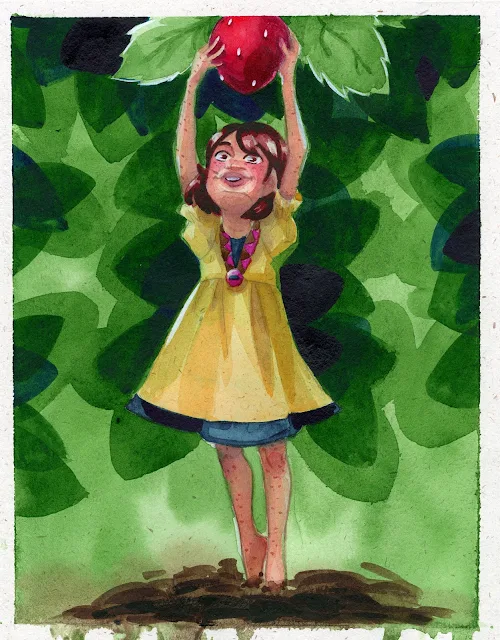






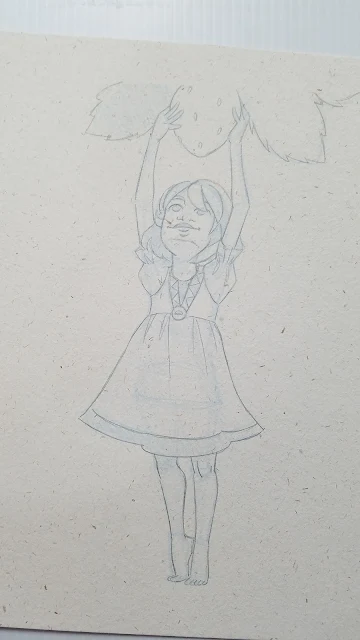





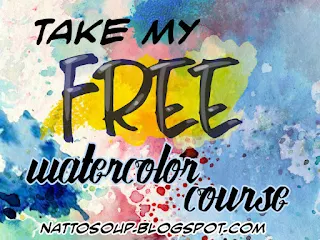






















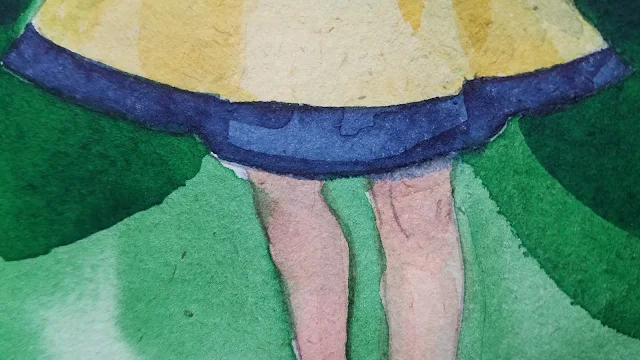


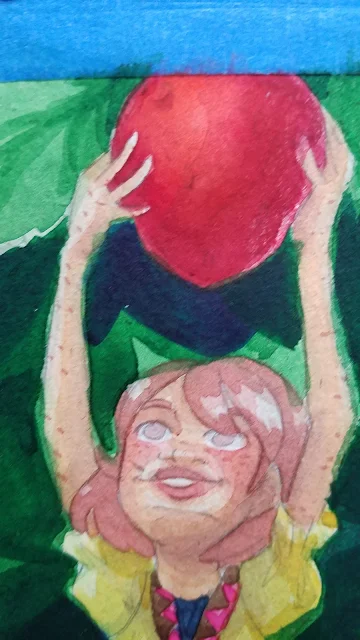




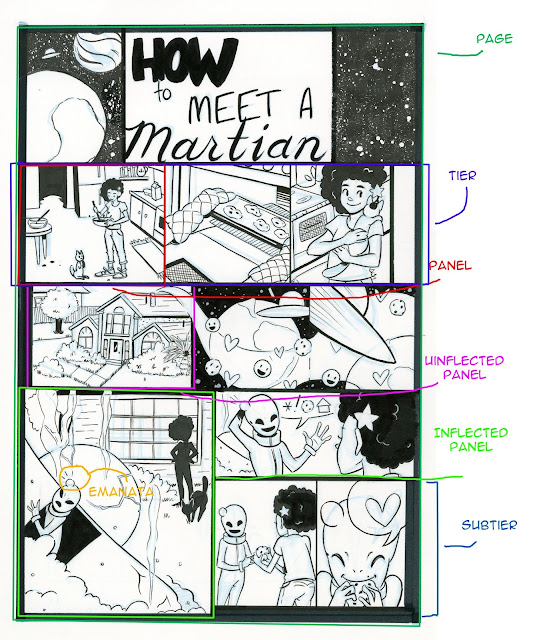
Comments
Post a Comment